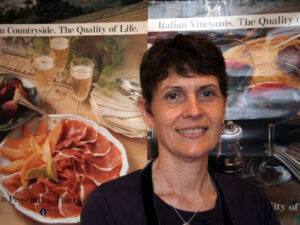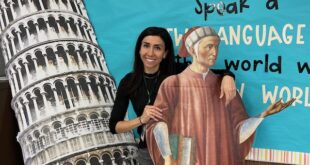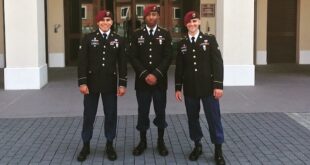
“I’m always looking for ways to make it fun,” says Politzer, who started at St. Raymond in February 2009. “Kids have a short attention span and aren’t very motivated or focused, so Italian has to be something they look forward to every week, or they’ll get tired! I love using songs to teach vocabulary and pronunciation; I think music is one of the best tools we can use when learning a new language.”
Though it’s her first teaching position, Politzer gets help from one of the best: Lyn Scolaro of Prospect High School (profiled in February’s Fra Noi). Like Scolaro, Politzer believes the richness of Italian culture, and chances to experience it, enliven language classes beyond anything in a textbook.
“Every year we invite the exchange students from Italy to visit our school, and they sit down and exchange ideas and questions with our students,” she says. “We’ve also been lucky to have had the General Consul of Italy, Sig Alessandro Motta, visit on two occasions.”
Because Italy itself has evolved much over time, Politzer can claim Italian lineage that isn’t reflected on a modern map. Her parents were born in Dalmatia (now Croatia) before World War II, when that area was under Italian control. After she was born, Politzer and her family spent five years in Costa Rica before settling in Alessandria, in Italy’s Piedmont region. “My parents always considered themselves Italians and spoke the Venetian dialect at home,” says Politzer, who attended the Liceo Classico in Alessandria, and the Universita’ deli studi di Genova for her liberal arts degree.
Some aspects of her job are challenging, as grammar concepts such as gender forms confuse younger students. “I try to point out the similarities between Italian and English as much as I can, so they understand that both languages come from the same source — Latin — and aren’t all that different,” she says.
And literally, the show’s the thing: Every spring Politzer’s students put on a concert, where all grades sing in front of their families. ” I coach my 4th grade classes to sing a few tunes in Italian; we have done songs like ‘Azzurro,’ ‘Volare,’ ‘Sognando la California,’ and this year they sang ‘La Bella e la Bestia,’ in Italian of course.”
In the end, she thrills to see a chorus of young minds coming into harmony with a most musical language. “To see the growth in some kids, to see them almost speak a language that is completely foreign to them is just amazing,” she says. “I love to see the spark in their eyes when they understand a concept, and to have little kids hug me and say they love Italian!”
 Fra Noi Embrace Your Inner Italian
Fra Noi Embrace Your Inner Italian






